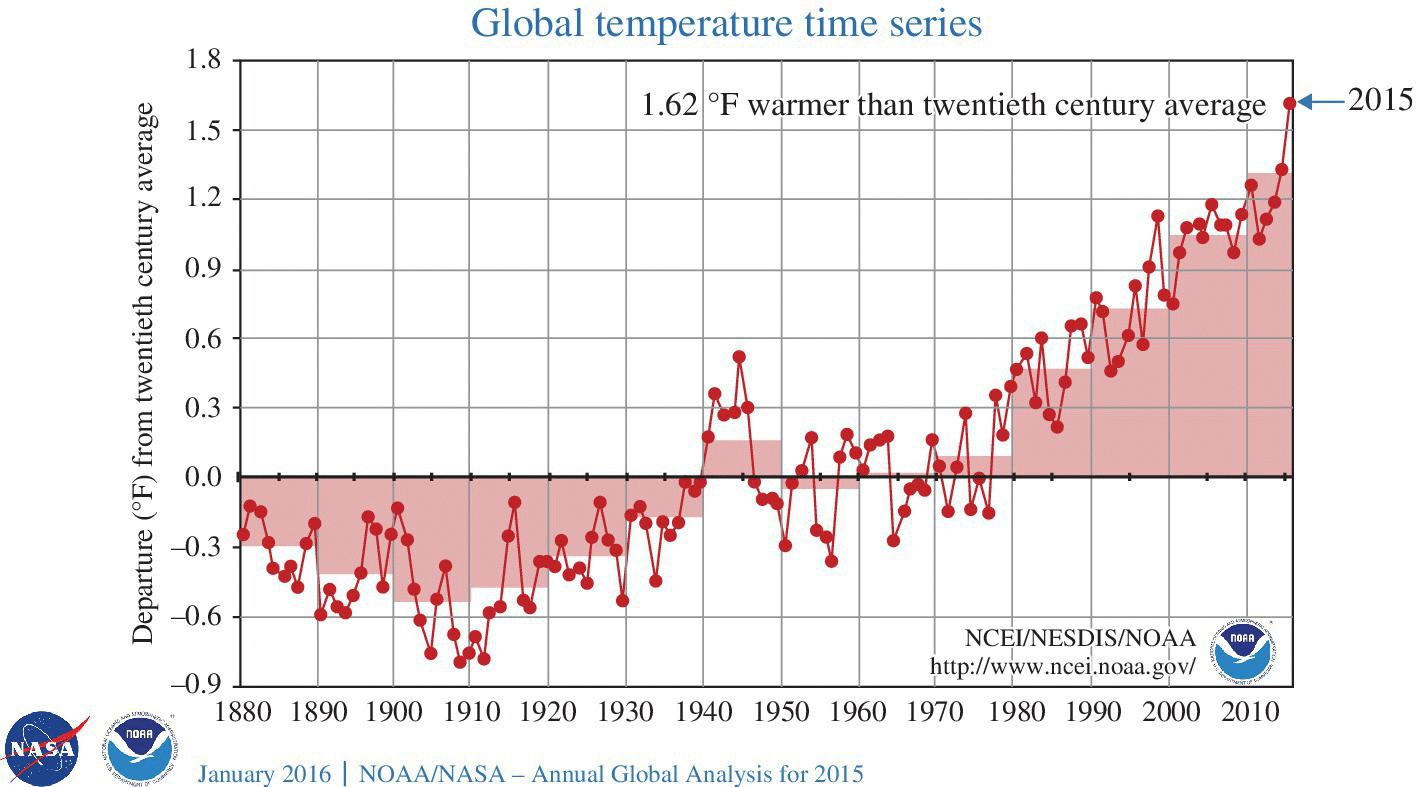1INTERNET OF THINGS AND DATA ANALYTICS IN THE CLOUD WITH INNOVATION AND SUSTAINABILITY
HWAIYU GENG
Amica Research, Palo Alto, CA, USA
1.1 INTRODUCTION
In January 2016, the US NASA’s Global Climate Change reported [1]: “Earth’s 2015 surface temperatures were the warmest since modern record keeping began in 1880, according to independent analyses by the National Aeronautics and Space Administration (NASA) and the National Oceanic and Atmospheric Administration (NOAA).”
The planet’s average surface temperature has risen about 1.8°F (1.0°C) since the late 19th century, a change largely driven by increased carbon dioxide and other human‐made emissions into the atmosphere (Figure 1.1).

FIGURE 1.1 2015 was planet Earth’s warmest year since modern record keeping began in 1880, according to a new analysis by NASA’s Goddard Institute for Space Studies.
Source: NASA and NOAA.
Note: NASA’s data showed that each month in first half of 2016 was the warmest respective month globally in the modern temperature record.
The World Bank issued a report in 2012 [2] describing what the world would be like if it warmed by 4°C (7.2°F): “The 4°C world scenarios are devastation: the inundation of coastal cities, increasing risks of food production potentially leading to higher malnutrition rates; many dry regions becoming dryer, wet regions wetter, unprecedented heat waves in many regions, especially ...
Get Internet of Things and Data Analytics Handbook now with the O’Reilly learning platform.
O’Reilly members experience books, live events, courses curated by job role, and more from O’Reilly and nearly 200 top publishers.

